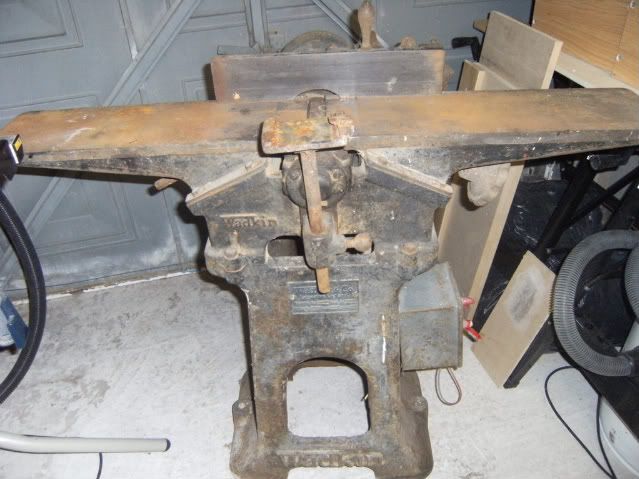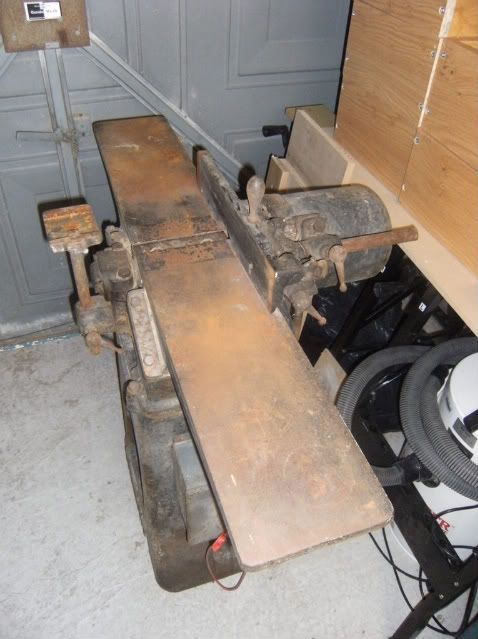Hi all
Dan Tovey kindly (?) put me in contact with a chap who wanted to get rid of this little "beauty"


:shock:
Well, where to start ??????
As you can see, there is a lot of rust, which seems to be mainly surface rust. It is fully cast iron and weighs an absolute ton. It took 3 of us to get it in the back of my people carrier (!) - and I then had to fathom a way of getting it out again without either damaging the machine, the car or my feet! :lol:
It is 3 phase, converted to single phase. 6" blades on a 3 knife cutterblock. I don't even know if the motor is working (although apparently it used to!). The cutter guard is missing, as well as the knurled wheel used to adjust the outfeed table.
Anyway, I have never attempted anything like this before. Does anybody know of a good source of info on restoring machines like these?
Hope somebody out there can help.
Cheers
Karl
Dan Tovey kindly (?) put me in contact with a chap who wanted to get rid of this little "beauty"


:shock:
Well, where to start ??????
As you can see, there is a lot of rust, which seems to be mainly surface rust. It is fully cast iron and weighs an absolute ton. It took 3 of us to get it in the back of my people carrier (!) - and I then had to fathom a way of getting it out again without either damaging the machine, the car or my feet! :lol:
It is 3 phase, converted to single phase. 6" blades on a 3 knife cutterblock. I don't even know if the motor is working (although apparently it used to!). The cutter guard is missing, as well as the knurled wheel used to adjust the outfeed table.
Anyway, I have never attempted anything like this before. Does anybody know of a good source of info on restoring machines like these?
Hope somebody out there can help.
Cheers
Karl
































